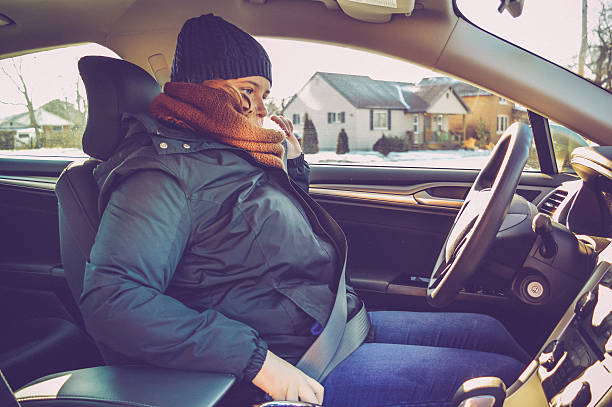Written By: Salvatore Shaw and Ryan Marinacci, Student-at-Law
I recall as a young lawyer, a piece of advice I received from an accident reconstruction engineer that continues to stick in my mind to this day. His advice to me was whenever I was buckling in, to make sure that my winter jacket was not adding unnecessary risk to my commute. He explained a little known but serious danger of how bulky winter jackets prevent seatbelts from fitting snuggly around us, increasing the chances of serious injury.
It turns out the additional layers worn during the winter months prevent a seatbelt from cinching into place and holding us tightly against the seat. The added bulk of the jacket has the effect of creating a pocket or areas where the seatbelt is actually loose against the body. In the event of a collision, this added looseness in the seatbelt system can allow you – and especially children – to move around more easily and strike objects inside the car (i.e. a door frames or windows) or worse, escape the seatbelt restraint system altogether and be ejected.
Transport Canada spokesperson Barnary Baines explains that,
Unfortunately during a collision, because there is compressing material, the weight of the child and the force of the collision is going to push that suit down — which is going to make the harness loose … [which] is going make it possible for ejection.
A good rule of thumb, Ms. Baines suggests that the seatbelts should be tight enough that parents cannot fit more than one finger beneath the chest harness.
AAA spokesperson Lilla S. Mason echoed the concerns related to bulky winter jackets rendering seatbelts less effective for children,
Parents should buckle their kids in car seats and seat belts without jackets first, then either tuck a blanket around them or have kids lay their jackets on their laps or wear them backwards. Seat belts need to be fitted to the passenger, not the jacket.
In order to determine whether a coat results in too loose a car seat harness, Emily A. Thomas of Consumer Reports, suggests adjusting the harness around the child with the jacket on, and again with the jacket off. If the harness as adjusted for the jacket can be pinched between the thumb and forefinger when the jacket is off, the jacket is too big and should not be worn under the harness.
Seat belts are best worn close to the body and are proven to protect you from brain and spinal cord injuries in the event of a collision. Consider the following alternatives which will help allow you and your children to ride comfortably, without the dangers posed by winter jackets or snowsuits when buckling up:
- Take the time to warm up the car before the drive. If the car is fully warmed up, you and your passengers will be able to ride comfortably in the car with a properly tightened seatbelt without wearing a winter jacket. This will avoid the danger of a loose-fitting seatbelt altogether.
- For children, consider placing the coat on backwards. Here, the seatbelt is buckled against the child first and then the coat is put on backwards over the child to keep them warm.
- Keep your coat open and buckle the seatbelt under the coat next to the body. This will allow the seatbelt and particularly the lap and chest belts to fit more snuggly against you or your child.
- Since children love blankets, consider using a blanket as opposed to a thick jacket in the car. Tucking a blanket over a child, once they have been placed in their seatbelt harness, will help keep them warm while allowing the seatbelt to be properly tightened before heading out.
The next time you are fastening a seatbelt around yourself or a child, take a minute to check that the seatbelt is securely fastened close to the body. It could save a life.






